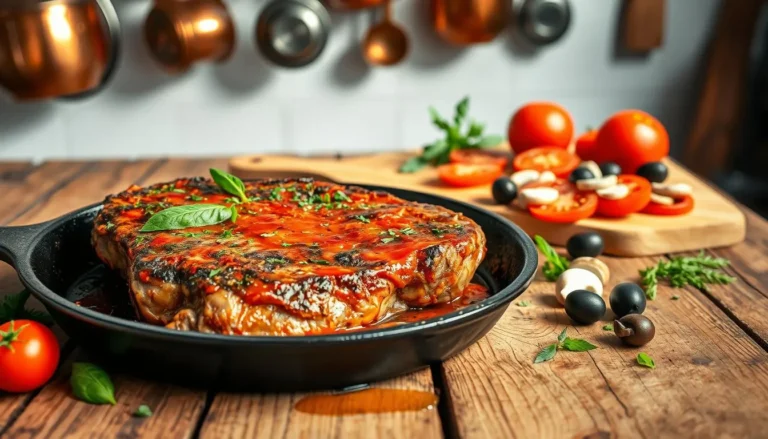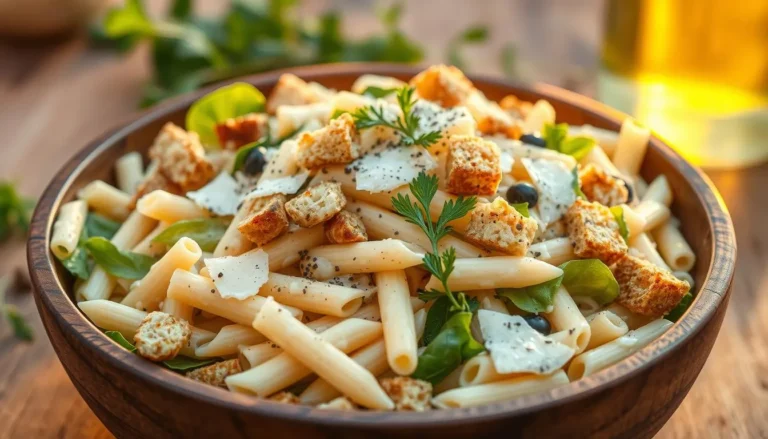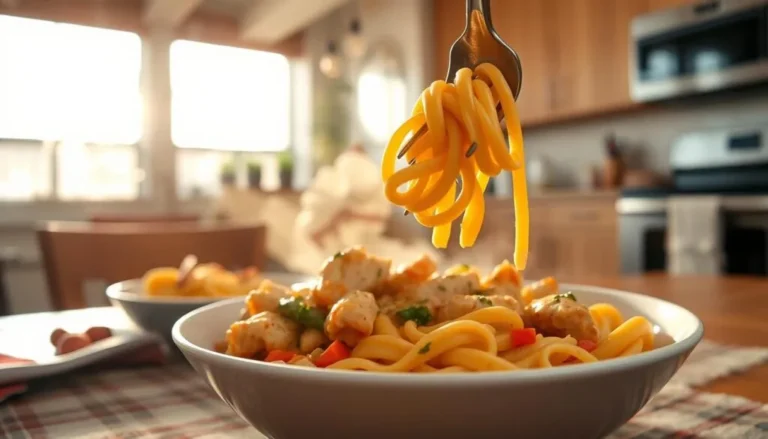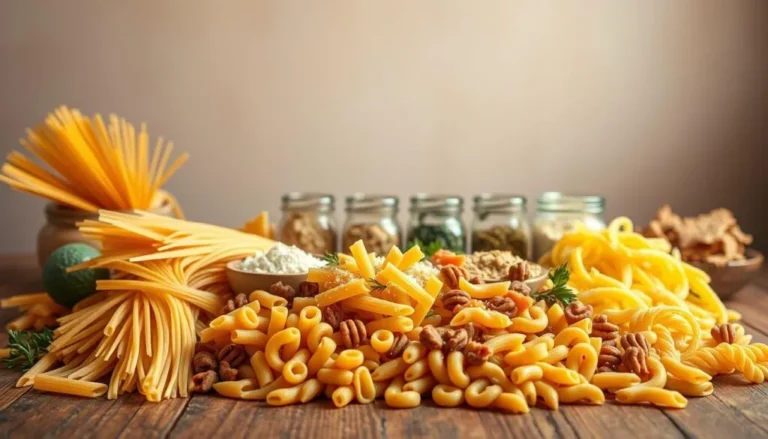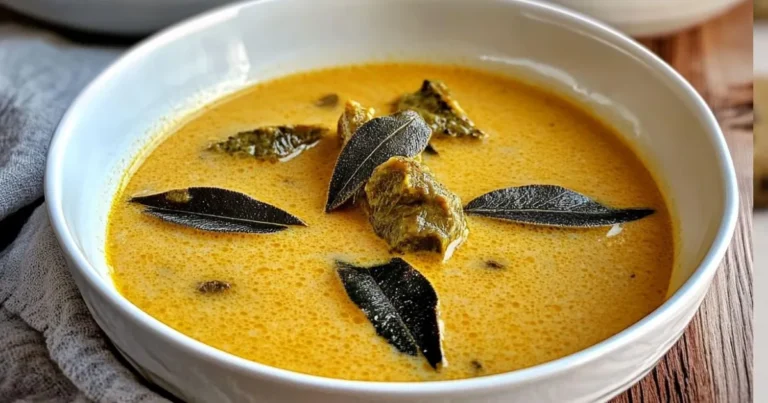Pasta de Pasta: How to Make the Creamiest Sauce Ever
Table of Contents
Every kitchen has a magical moment. It’s when simple ingredients turn into something amazing. For me, that moment is when I make the perfect pasta de pasta sauce.
This sauce is a creamy Italian masterpiece. It turns a simple meal into a special experience. Imagine eating pasta that’s silky and rich, with every bite full of velvety goodness.
The secret is not hard. It’s about finding the right mix of cream, cheese, and technique. This mix turns a basic pasta dish into something truly special.
In this guide, you’ll learn to make a sauce that rivals restaurant quality. We’ll dive into the world of pasta de pasta. You’ll learn every step to make a creamy sauce that will wow even the pickiest eaters.
Key Takeaways
- Master the art of creating a perfectly creamy pasta sauce
- Learn professional Italian cuisine techniques
- Understand the critical role of cream and pasta water
- Discover how to achieve restaurant-quality results at home
- Explore the science behind sauce-making
Understanding the Art of Creamy Pasta Sauce
Making the perfect pasta sauce is a mix of science, skill, and creativity. It starts with knowing the basics that turn simple ingredients into amazing dishes.
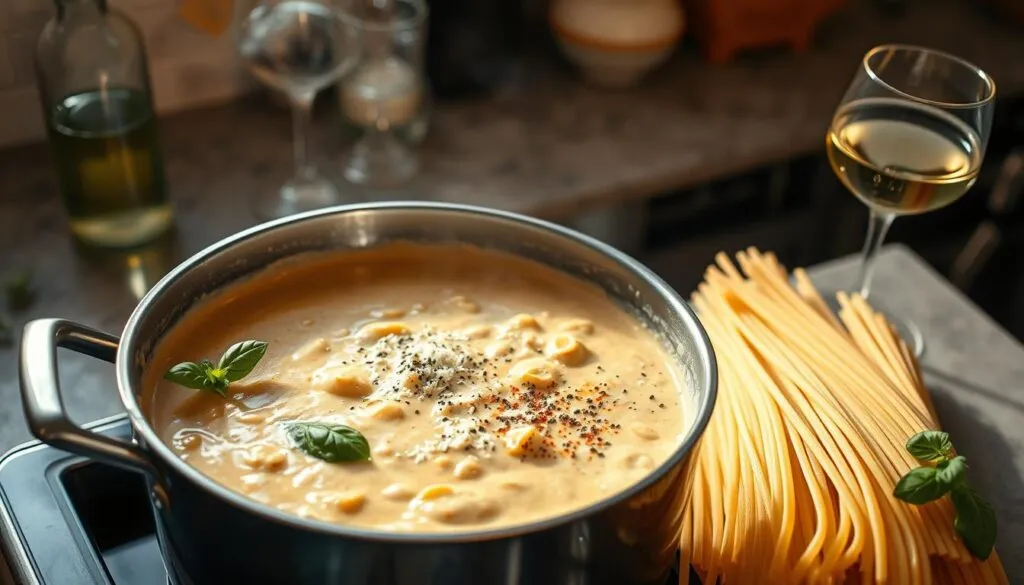
Creating great pasta sauces is more than just mixing ingredients. It’s about knowing how different pasta types and ingredients work together. This creates flavors that go well together.
The Role of Heavy Cream in Italian Cuisine
Heavy cream is key in making rich, smooth sauces. It adds:
- Smooth texture and luxurious mouthfeel
- Enhanced flavor absorption
- Binding properties for sauce ingredients
Essential Equipment for Sauce Making
For professional sauce making, you need the right tools:
| Equipment | Purpose |
|---|---|
| Heavy-bottomed saucepan | Even heat distribution |
| Whisk | Smooth sauce emulsification |
| Wooden spoon | Gentle ingredient mixing |
Basic Sauce Chemistry
Knowing sauce chemistry is key to making perfectly emulsified pasta sauces. The mix of fats, proteins, and liquids affects the sauce’s texture and consistency. Important points include:
- Temperature control
- Gradual ingredient incorporation
- Consistent stirring technique
By learning these basics, you can turn simple ingredients into amazing pasta dishes. These dishes will surely impress your taste buds.
Essential Ingredients for Pasta de Pasta
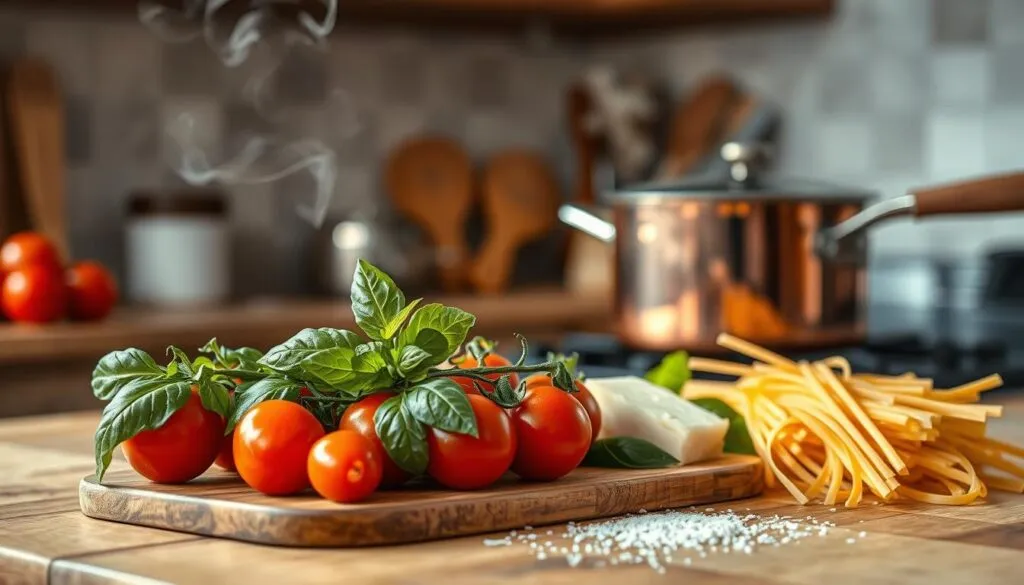
Making the perfect pasta recipe starts with the right ingredients. You need to pick high-quality parts that make your dish taste great and feel good.
Here are the key ingredients you’ll need:
- 24 ounces dry fettuccine pasta
- 1 cup unsalted butter
- ¾ pint heavy cream
- Salt and pepper to taste
- 1 dash garlic salt
- ¾ cup grated Romano cheese
- ½ cup grated Parmesan cheese
Understanding pasta nutrition is key to a healthy dish. Fresh pasta has special health benefits over dried pasta. Here’s what you get per serving:
- 221 calories
- 4.6 grams total fat
- 8 grams protein
- 36 grams carbohydrates
Pro tip: Use a kitchen scale to weigh your ingredients. This ensures your pasta always turns out right.
The secret to an exceptional pasta dish lies in the quality of your ingredients and the care you take in preparation.
Choose freshly grated Romano and Parmesan cheese for the best taste. These cheeses add flavor, protein, and calcium to your dish.
The Perfect Pasta Selection Guide
Choosing the right pasta is key to a great creamy dish. The pasta you pick can make or break your meal. This is especially true when you’re trying out new pasta cooking techniques.
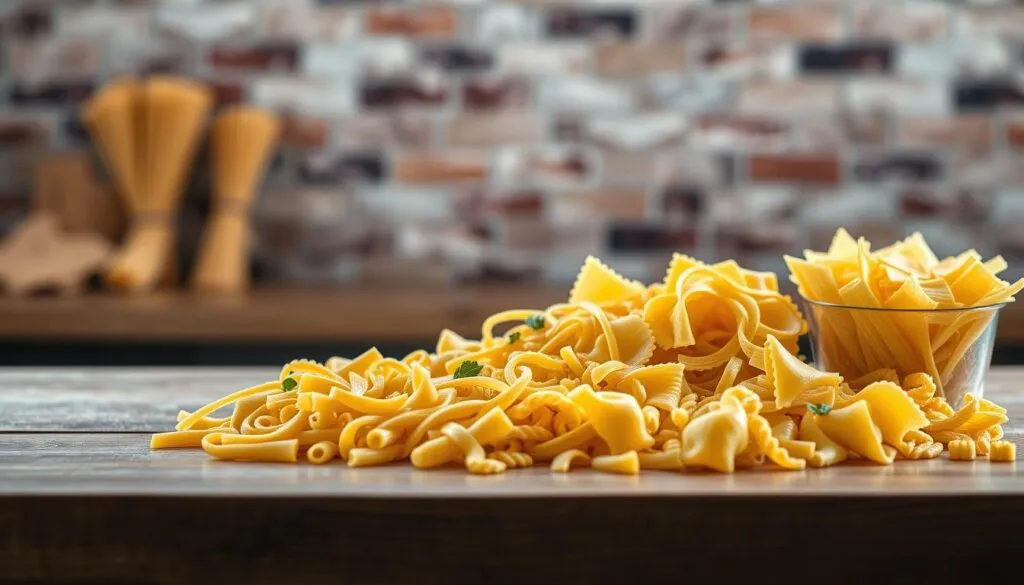
Different pasta shapes work better with different sauces. This means your choice is very important for a perfect meal. Learning about pasta varieties can really improve your cooking.
Fresh vs. Dried Pasta Options
You’ll find two main types of pasta: fresh and dried. Here’s a quick look at the differences:
- Fresh pasta: Softer texture, cooks faster
- Dried pasta: Lasts longer, has a firmer texture
- Artisanal pasta: Made by hand with top ingredients
Best Pasta Shapes for Creamy Sauces
Not all pasta shapes are good for creamy sauces. Some are better than others:
- Fettuccine: Great for thick, rich sauces
- Linguine: Works well for lighter cream-based dishes
- Pappardelle: Best for hearty, robust sauces
Al Dente Cooking Techniques
Learning the al dente technique can make your pasta amazing. Cook it until it’s tender but still a bit firm. This usually takes 8-10 minutes, depending on the pasta.
Pro tip: Always taste your pasta during cooking to achieve the perfect texture!
Mastering the Base Cream Sauce
Making the perfect base cream sauce is key for pasta lovers. It starts with knowing how to mix ingredients and use the right techniques.
First, get your main ingredients ready:
- Unsalted butter
- Heavy cream
- Garlic salt
- Fresh ground black pepper
- Optional: Fresh minced garlic
The secret to a smooth sauce is managing heat. Use a heavy saucepan and keep the heat low. Slowly melt the butter to make a rich base.
It’s important to control the temperature when making your sauce. The best range is 55-60°C. This keeps the sauce smooth and prevents cheese from clumping.
Here are some tips for making your sauce perfect:
- Whisk constantly to avoid burning
- Add cream slowly
- Season a little at a time
- Check and adjust the taste
Want to take your sauce to the next level? Try using a hand blender. It makes the sauce super smooth and even. This makes your pasta dish truly special.
Cheese Selection and Incorporation Methods
Exploring Italian cuisine means learning about cheese’s role in pasta. The right cheese can make a sauce go from good to great. Choosing and adding cheese needs skill and knowledge.
Cheese is key to a creamy pasta sauce. Your cheese choice affects flavor, texture, and dish quality.
Romano Cheese Benefits
Pecorino Romano adds a sharp, salty taste to pasta sauce. Made from sheep’s milk, it has special qualities:
- Intense, tangy flavor profile
- High protein content
- Traditional Italian cheese with centuries of history
- Excellent for grating and melting
Parmesan Integration Techniques
Parmigiano-Reggiano is the top Italian cheese. To add it to your sauce, follow these steps:
- Grate the cheese finely for smooth melting
- Add cheese gradually to prevent clumping
- Reduce heat to medium when incorporating
- Stir constantly for even distribution
Cheese-to-Cream Ratios
Finding the right cheese to cream balance is important. Use about 1/4 cup of grated cheese per cup of cream. This mix creates a rich, creamy sauce without being too thick.
Pro tip: Let the cheese warm up to room temperature before adding it. This makes it melt better and mix well with the cream.
Secret Techniques for Extra Creaminess
Discover how to make creamy pasta like a pro with these top pasta cooking tips. The secret to a smooth sauce is knowing how to prepare pasta and develop sauces.
- Use pasta water starch to thicken your sauce naturally
- Master the art of tossing pasta with tongs for even sauce distribution
- Keep an eye on cooking temperatures to avoid sauce separation
Alton Brown introduces some game-changing pasta cooking methods. He suggests using less water to cook pasta, which boosts starch levels and makes sauces creamier. Cooking pasta in just enough water creates a perfect mix for emulsification.
The mantecare technique is essential for a silky texture. This Italian method involves:
- Removing pasta slightly before it’s fully cooked
- Thoroughly tossing it with sauce
- Adding pasta water to stabilize the emulsion
Professional chefs know that starch is key to creamy pasta. Dry pasta, made from durum wheat, releases more starch when cooked. This starch helps bind fats, making the sauce rich and smooth. The trick is to work fast and confidently, using pasta water to emulsify.
The magic happens in those final moments of sauce preparation – treat your pasta with respect, and it will reward you with incredible creaminess.
Customizing Your Pasta de Pasta
Creating the perfect pasta recipes lets you turn a simple dish into a personal masterpiece. By trying out different pasta types and adding new ingredients, you can make your meal special.
Adding Aromatics and Herbs
Make your pasta de pasta better with aromatic herbs. They add depth and complexity. Here are some great options:
- Fresh basil for a bright, peppery note
- Thyme to add earthy undertones
- Oregano for a classic Italian touch
- Rosemary for a robust, woody flavor
Protein Enhancement Options
Adding protein can make your pasta healthier and tastier. Choose from these protein-rich options:
| Protein Option | Preparation Tip |
|---|---|
| Grilled Chicken | Slice thinly and add just before serving |
| Sautéed Shrimp | Quickly sear in garlic butter |
| Crispy Pancetta | Render until golden and crisp |
Vegetable Additions
Adding vegetables makes your pasta colorful and nutritious. Here are some great choices:
- Sautéed mushrooms for an umami flavor
- Roasted cherry tomatoes for sweetness
- Wilted spinach for added nutrients
- Caramelized onions for depth
Pro tip: Always sauté vegetables separately to maintain their texture and prevent watering down your creamy sauce.
By trying out these customizations, you’ll make pasta recipes that are truly yours. You’ll show off the variety of pasta and satisfy your creative side.
Troubleshooting Common Sauce Issues
Mastering pasta cooking techniques isn’t always easy. Even skilled home chefs face sauce problems. Knowing how to fix a broken sauce is key to making perfect pasta de pasta.
Sauce separation is the main issue. When your sauce breaks, it turns into a watery liquid and an oily film. This usually happens because of:
- Excessive heat
- Rapid temperature changes
- Incorrect ingredient ratios
Different sauces need different fixes:
- Cheese Sauces: Whisk in warm milk or cream to fix graininess
- Butter Sauces: Add cold butter while whisking to mix again
- Cream Sauces: Use a cornstarch slurry to stop protein clumps
“The key to perfect sauce is patience and understanding the delicate balance of ingredients.”
For pasta de pasta success, remember these tips: Add ingredients slowly, keep the heat moderate, and whisk often. These steps can avoid most sauce separation problems and give you a creamy, tasty sauce every time.
Serving and Presentation Tips
Turning your pasta recipes into something special starts with how you serve them. The right presentation can make any dish look like it came from a restaurant. It’s all about making your italian cuisine stand out.
Serving pasta is more than just cooking. You want to create a dish that looks great and tastes amazing. It’s about bringing the true flavors of italian cuisine to your plate.
Temperature Control Strategies
Here are some pro tips to keep your pasta at the perfect temperature:
- Maintain pasta at 200 degrees Fahrenheit in the oven
- Limit warming time to no more than 30 minutes
- Use deep dish bowls to retain heat longer
Creative Plating Techniques
Here are some ways to make your pasta look amazing:
- Choose deep bowls over flat plates
- Use 3 color contrasts for visual appeal (red, green, white)
- Twirl pasta gently to create height
Garnish Selection
The right garnish can take your dish from good to great. Here are some ideas:
- Fresh basil leaves
- Grated Parmesan cheese
- Cracked black pepper
- Microgreens for an elegant touch
Remember, presentation is key in italian cuisine. With these tips, your pasta recipes will look as good as they taste.
Storage and Reheating Guidelines
Keeping your Pasta de Pasta fresh is key. It’s all about how you store and reheat it. Knowing the right pasta cooking techniques will keep your dish tasty and nutritious.
Refrigerator Storage Tips
Your creamy pasta can stay in the fridge for 3 to 5 days. Use airtight containers to keep moisture in and the sauce creamy. Try to keep the sauce and pasta separate for the best taste.
Freezing Guidelines
- Freeze pasta for up to 2 months
- Add 1 tablespoon of oil per 8 ounces to prevent sticking
- Use freezer-safe containers with tight seals
Reheating Methods
| Method | Temperature | Time |
|---|---|---|
| Microwave | Medium | 1-minute increments |
| Oven | 350°F | 20 minutes |
| Skillet | Medium heat | 5-7 minutes |
For dairy sauces, reheat slowly and add a bit of cream. This keeps it moist and prevents drying.
Food Safety Considerations
Always check for spoilage before eating stored pasta. Throw it away if you see:
- Slimy texture
- Unusual odors
- Discoloration
- Off taste
Don’t eat pasta that’s been at room temperature for over 2 hours. It can grow harmful bacteria. By following these tips, your Pasta de Pasta will stay delicious and safe.
Conclusion
Your journey into pasta making connects you with a long history. It shows how pasta makers turn simple ingredients into amazing dishes. You’ve learned how to pick the right pasta and make creamy sauces, improving your cooking.
Whole wheat pasta is not just tasty. It has about 7 grams of protein and more fiber. This makes your homemade pasta both tasty and healthy. You can try different pasta types to match your diet and taste.
See pasta making as a journey of learning. Your kitchen is a place where creativity meets tradition. Whether it’s a quick meal or a dinner party, your skills will make pasta dishes that impress everyone.
Great cooking is all about trying new things and loving what you do. Keep learning from pasta makers, studying pasta history, and most importantly, enjoy making meals that bring people together. Your journey is just starting, and it’s full of delicious adventures.
FAQ
What is Pasta de Pasta?
Pasta de Pasta is a fancy way to make pasta sauce. It uses heavy cream, butter, and special cheeses. This method makes your pasta dishes taste richer and creamier.
What are the key ingredients for a perfect creamy pasta sauce?
You need good pasta, heavy cream, butter, and top cheeses like Parmesan. Adding pasta water helps make the sauce smooth and clingy.
How do I prevent my cream sauce from becoming grainy or separating?
Keep the heat low and add cheese slowly. Use pasta water to mix the sauce. Stir constantly and take it off heat before adding cheese for a smooth sauce.
Which pasta shapes work best with creamy sauces?
Shapes like rigatoni, fettuccine, and penne are great. They hold more sauce, making every bite creamy and flavorful.
Can I make Pasta de Pasta vegetarian or with dietary restrictions?
Yes! Use plant-based cream and lactose-free cheese. You can also add veggies and proteins for your diet. The basic steps stay the same.
How long can I store leftover creamy pasta?
Keep it in an airtight container in the fridge for 3-4 days. Reheat slowly, adding pasta water or cream to keep it creamy.
What’s the secret to achieving restaurant-quality creaminess?
It’s all about emulsification, temperature control, and pasta water. Start with quality ingredients, add cheese slowly, and use pasta water for a silky sauce.
Can I make Pasta de Pasta ahead of time?
You can prep the sauce ahead, but cook the pasta just before. This keeps the sauce fresh and prevents it from getting too thick.


